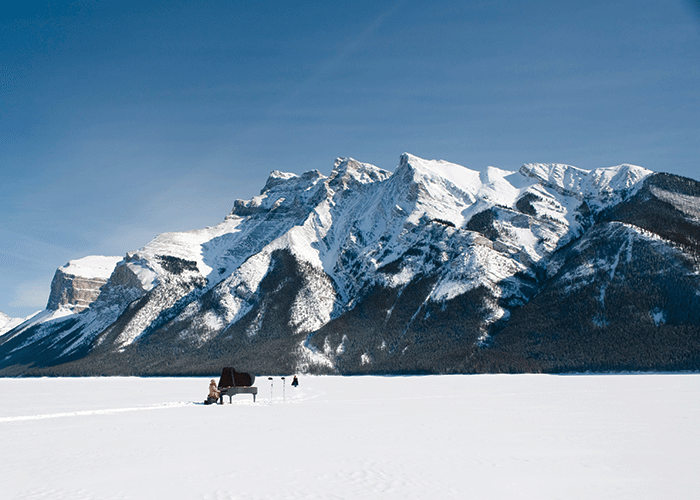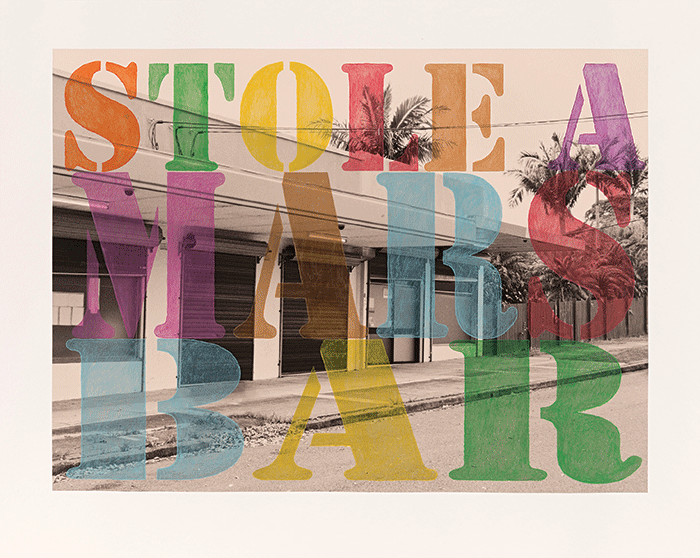Ted Snell is the director of the University of Western Australia’s Cultural Precinct, and currently the WA art reviewer for The Australian.
ABDUL-RAHMAN ABDULLAH
Abdul-Rahman Abdullah's water buffalo, alerted from its immersive wallow in
a hand-knotted Iranian rug, takes you by surprise. The Obstacle is instantly engaging, the seductive quality of the craftsmanship drawing you in close enough to hear the stories the artist wants to tell: stories about growing up in Australia as a Muslim, being seen as different, living and working in Perth, and documenting the changing social mores of his community. "It's the spectacle of different truths that really interests me," he explains, and these truths can best be explored through using animal imagery. After spending a number of years prior to becoming an artist designing and building enclosures and animal sculptures at Perth Zoo, animals have come to form an integral part of his practice. "I love exploring the ways that we anthropomorphise animals to reflect our own aspirations and mythologies," he says. "It allows me to expose ideas of the magical in the mundane and to discuss my own ideas about identity. It's the ideas and relationships that I can explore through animals that really interest me."
The magical in the mundane pertinently sums up the sense of wonder when approaching Abdul-Rahman's work. That response is heightened by the realism of his superbly crafted pieces. "I love the physicality of carving, like throwing yourself into a delicate puzzle with a chainsaw instead of instructions," he says. "I try to demand a level of finish from myself that best serves the ideas that I want to get across." This process generates powerful works that resonate with each viewer's personal experiences, and in the process amplify the artist's story, because each work is a catalyst for communication, conversation and exchange.
.gif)
The Obstacle, carved wood and carpet, 2014.
Abdul-Rahman is one of three brothers (including artist Abdul Abdullah), who all drew and made visual responses to their world from an early age, adapting and appropriating from aspects of their Asian and Western heritage. For all the siblings, their Muslim faith has been influential in shaping their work and each has framed that experience within it. For Abdul-Rahman, "being a Muslim will always be a core aspect of my identity, it's inescapable and I'm very comfortable with that. Since 9/11 Islam was in the public realm, and we were the bad guys. In this context, my brother Abdul's work is very politicised, looking at issues of marginalisation and alterity that underpin the Muslim experience in the western world. For me, this polarisation of Muslim identity directly informs my practice, it's really important for me to explore my own experience as an artefact of social change."
Delving deep into his memories of childhood, Abdul-Rahman creates work that involves the viewer in a physical way, moving in and around objects in a particular space to heighten the alternative sense of reality he generates through his skilful re-interpretation of his animal subjects.
It has been a busy year for Abdul-Rahman and it ends with a bang, showing alongside Joseph Beuys, Maurizio Catellan, Ricky Swallow, Patricia Piccinini, Anastasia Klose and Michael Parekowhai in Menagerie at the Australian Centre for Contemporary Art in Melbourne, curated by Juliana Engberg. Next year, he is part of an augmented reality project curated by Gemma Weston for the Perth International Arts Festival and the City of Subiaco, and also HERE & NOW15, curated by Andrew Purvis, at Lawrence Wilson Gallery, as well as a project at the Art Gallery of Western Australia with his brother Abdul Abdullah.
RAGNAR KJARTANSSON: THE VISITOR, AND THE END – ROCKY MOUNTAINS
After his inclusion in the 2009 Venice Biennale, Ragnar Kjartansson gained international attention for his ambitious and quirky performance works. For the Biennale, he painted a portrait of a friend every day for the six months of the festival. A former member of the Icelandic band Trabant, Kjartansson explores his fascination with the power of music to embed itself in your consciousness. His durational performances require endurance, for performers and audience alike. In The End – Rocky Mountains, Kjartansson and a friend play bluegrass and country music on various instruments, including a piano placed in a snow-covered plateau surrounded by towering peaks. In this extreme environment, he tests the boundaries between art and life. "The word 'endurance' is a little bit too athletic for me," he says. "It's so much harder to be a waiter than to sing opera for 12 hours." Shown at the Fremantle Arts Centre on a five-channel projection during the height of an Australian summer, the juxtaposition of these extremes of heat and cold will no doubt please the artist greatly.

The End – Rocky Mountains, 2009. In collaboration with Davíd Thór Jónsson. Five-channel video projection, colour, sound. Loop: 30:30 min. BELOW The Visitors, 2012. Nine channel HD video, colour, sound. Loop: 00:64 min.
His other major work, to be shown at the John Curtin Gallery, is a nine-screen video installation called The Visitors, in which the artist lies in a bath playing a guitar while repeatedly singing, "Once again, I fall into my feminine ways". On the other screens, eight performers in different environments sing the same refrain, and as their voices rise and fall, crack and strain over an hour, they weave in and out of synchronisation, sometimes harmonising, sometimes collapsing into a dirge-like cacophony. Limited to a few lyrics, repeated over and again, the performers create an absorbing work that engages and mesmerises.
John Curtin Gallery: Curtin University & Fremantle Arts Centre, February 12–April 2; Fremantle Arts Centre, February 14–April 5.
TRACEY MOFFATT: KALEIDOSCOPE
The last major survey exhibition of Tracey Moffatt's work was held at the John Curtin Gallery in February 2004 as part of the Perth International Arts Festival. It followed an exhibition of her works from the Curtin Collection and the collection of the Art Gallery of Western Australia held in 1998. Now, a decade later, Tracey is back with an exhibition of new work, once again as part of PIAF.

Suburban Landscape No. 5. 'Stole a Mars Bar', 2013. From the series Spirit Landscapes, digital print hand-coloured in water crayon 81x99cm. Edition of eight, images copyright the artist and courtesy Roslyn Oxley9 Gallery, Sydney.
In the intervening years, Tracey has been based in New York, building on her already well-established international career, and the works from Kaleidoscope reflect her time in the Big Apple. In her video work Art Calls, she takes on the role of a talk-show host, quizzing eight artists on their take on art and on the development of their professional careers. Like all of Moffatt's work, it uses the scalpel of wit to cut into our cultural psyche by revealing the awkward and confronting with humour and sensitivity.
Her video work is shown alongside her Spirit Landscapes series that reveals a personal exploration of her 'return to country.' However, unlike the deep spiritual significance we've come to associate with many Aboriginal artist's understanding of 'country', Moffatt identifies the important sites in her life and those important to her family. Once again, wit plays a major role in a project that explores suburban spaces of personal significance, such as her Suburban Landscape No. 5. 'Stole a Mars Bar.'
West End Gallery, Perth Institute of Contemporary Art, February 19-April 12.